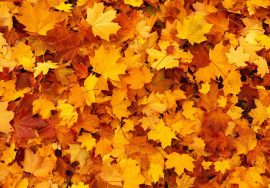
DETOX/CLEANSING TECHNIQUES RECOMMENDED IN AYURVEDA AND YOGA
In Yogic and Ayurvedic sciences, there are certain purificatory/cleansing processes which are very useful for detoxifying the body and mind.
In Yoga, there are 6 such techniques/methods, called “Shad/Sat Karma/Kriyas”. “Shad” or “Sat” means six and “Karma/Kriya” means processes or methods. These are mentioned in Gheranda Samhita as follows:
- Dhautir, Vastis, tathaa netir,
- Nauliki Traatakam tathaa;
- Kapalabhaatis cha aitaani,
- Sat karmaani smaacharet.
Translation: there are six cleansing processes for the body which should be performed (especially by those who want to practice yoga) and which are as follows:
- Dhauti – to cleanse the stomach, and the whole digestive system
- Vastra Dhauti – by using a long piece of pure cotton cloth with specific measurements.
- Danda Dhauti – by using a cord made in a specific way by twisting 3 long strings of raw cotton.
- Jala Dhauti/ Kunjala – by using warm saline/plain water.
- Agni Dhauti/ Agnisaar Kriya – by breathing techniques done in particular ways while maintaining certain postures.
2. Vasti/Basti (Enema) – by using pure water and while doing specific yoga postures.
3. Neti – to cleanse the nasal passage and sinus :
- Sutra Neti – special cotton string used to cleanse the nasal passage.
- Jala Neti – warm saline water is poured through each nostril alternatively, using a “Neti” pot.
- Dugdha Neti – warm milk is poured through each nostril alternatively, using a “Neti” pot.
- Ghrita Neti – warm melted ghee/clarified butter is poured through each nostril alternatively, using a “Neti” pot.
4. Nauli – Madhya Nauli, Vama Nauli and Dakshina Nauli – for eradicating toxins from the intestines.
5. Traatak – Gazing at a lamp/candle or at one particular point, at a certain distance from the eyes.
6. Kapala Bhaati – cleansing the skull/head/brain :
- Rechak Pradhan Kapala Bhaati – focusing mainly on the exhalation.
- Puraka, Rechaka Kapala Bhaati – focusing on inhalation and exhalation equally.
In Ayurveda there are 5 main cleansing processes mentioned, called “Pancha Karma”. “Panch” means 5 and “Karma” means techniques/methods.
Many people around the world have a misconception regarding Ayurvedic Panchakarma. They are under the impression that therapies like “Shirodhara”, “Abhyanga”, etc. are a part of Panchakarma.
But actually these therapies are called “Purvakarma”, i.e. the therapies which are done as preliminary techniques to prepare one’s body for “Pradhaankarma”, which is the actual Panchakarma process.
Following are the main Panchakarma techniques, i.e. the 5 cleansing/detox processes:
- Vamana: emesis – using specific herbal mixtures as per the “Prakruti” (constitution) & “Vikruti” (imbalances) of an individual, to induce/facilitate vomiting.
- Virechan: cleansing done through purgationwith the help of certain Ayurvedic laxatives, chosen according to the “Prakruti” & “Vikruti” of an individual.
- Basti: enema using specific herbs, mixed with warm water or by using warm oils chosen according to the “Prakruti” & “Vikruti” of an individual.
- Nasya: elimination of toxins through the nose using herbal oils and steam/fumes.
- Rakta Moksha: detoxification of the blood. Nowadays, this one is not practiced because it is not so practical. And instead of this method, Basti (enema) is divided into two parts, i.e. one type of enema is done using water, adding some herbs into it; and in another type of enema, Ayurvedic herbal oil is used.
In our subsequent blogs we will explain in detail some of the simple Yogic and Ayurvedic detox techniques which can be easily and comfortably done by everyone, along with the benefits of these detox techniques and the precautions to be taken.
To book an online appointment at Ayuryoga, with our Ayurveda/Yoga Expert Mr. Vinod Sharma Hong Kong please click here.








